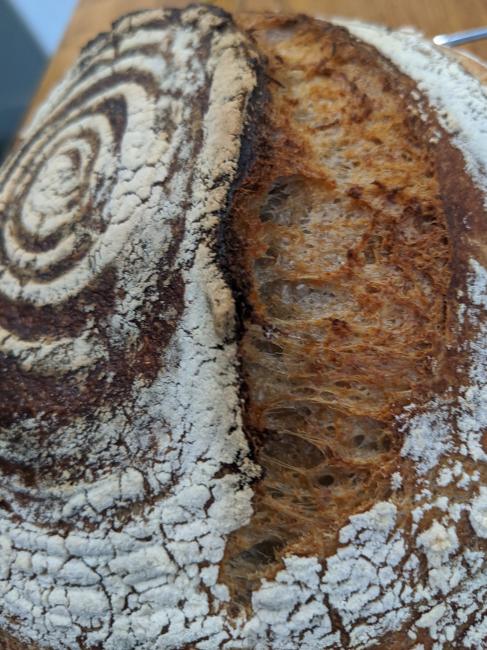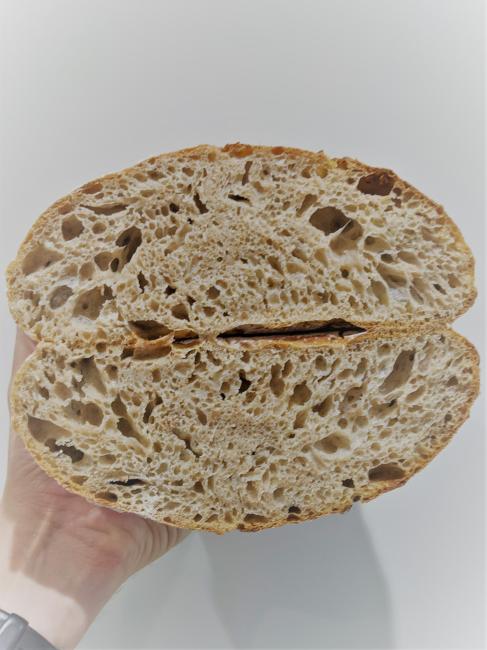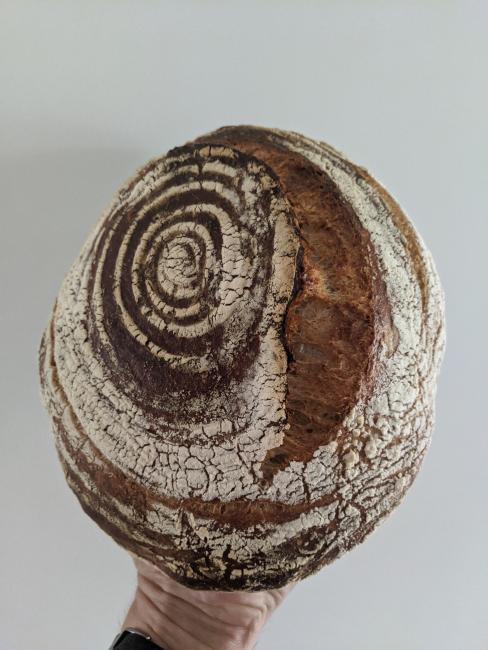
I've been increasingly convinced that the dish I was baking in just wasn't big enough. Sure enough, I switched to a larger dish and my loaves have just been getting bigger and bigger!
I've also been getting better results by doing the bulk rise at room temperature, then leaving the dough in the fridge overnight in a covered banneton and baking directly from the fridge.
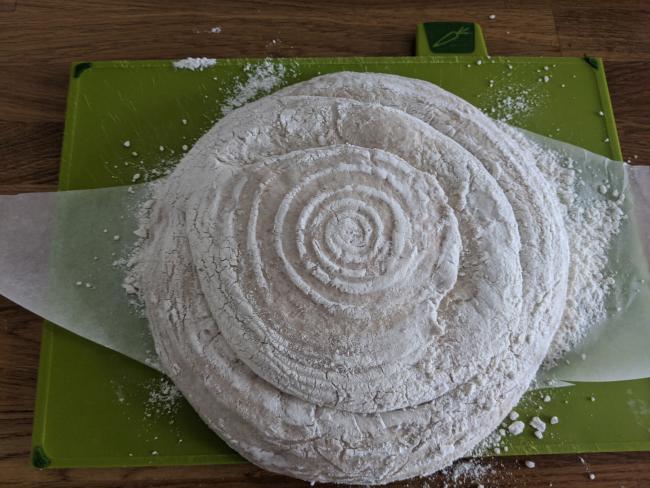
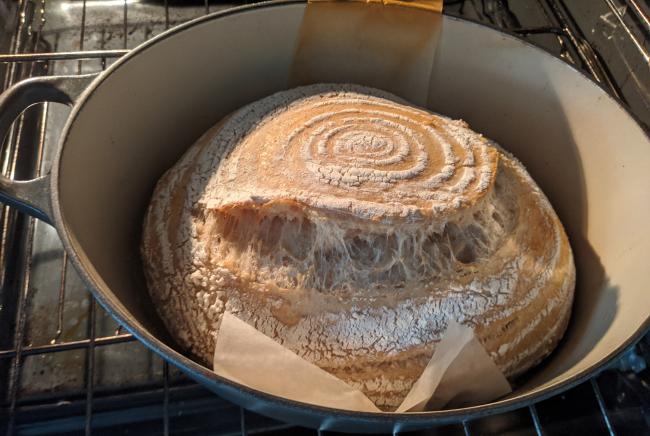
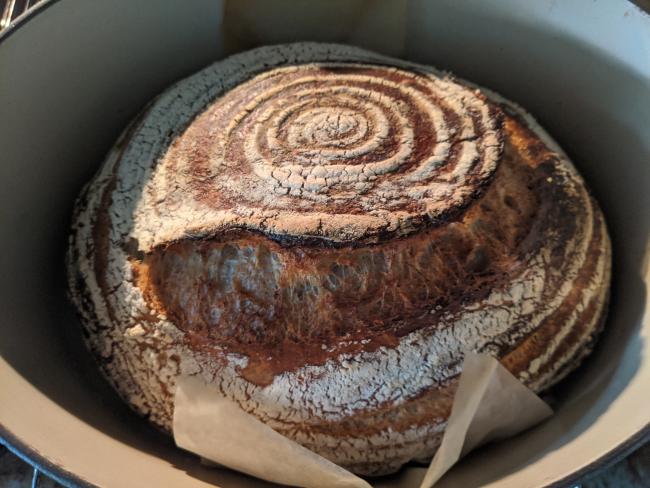
I've discovered that a mix of 400g strong white flour and 100g of wholemeal gives the perfect combination. It means you can stick to normal proofing and autloyse times, but you get a slightly darker colour and a much better crunch and fuller flavour.
As we're still at home most of the day, I am feeding my starter at about 9am in the morning, then starting the autloyse at 1 or 2pm, with four stretch-and-folds (or three if I forget to do one!) before leaving to bulk rise for about four to six hours. As it's been quite hot recently, I've not needed more than four hours to do the bulk rise. I know it's ready because there are visible bubbles in the dough, it's smooth and dome shaped.
I am skipping the 'bench rest' step as I understand I only need to do this if I divide the dough, which I'm not. But it's really important that you do a full lamination to spread out the bubbles and get a nice even crumb. So, after the bulk rise, I stretch the dough out into a large square, then fold in on itself and then again until I get a nice boule. Crucially, I do this on a completely bare work surface - no flour. Then, I transfer the dough to a heavily-floured banneton and add more flour around the edges. I then leave this covered, overnight in the fridge.
The following morning, I pop my larger, oval Dutch oven into the oven and pre-heat to 260 C for 45 minutes. Then, transfer the dough to parchment paper, helping it by running my fingers around the edges. Give it some nice healthy scores (one in the middle and then two along the sides), cut the parchment paper to get rid of all but two sides and then transfer to the oven.
I have been absolutely delighted with this bake and all recent bakes. Shifting to a larger oval dish has been life-changing: it really gives the dough room to grow and leads to a much lighter crumb and, naturally, a larger loaf. The colour have also been amazing and the dough so much easier to handle when taken from the fridge to bake.
